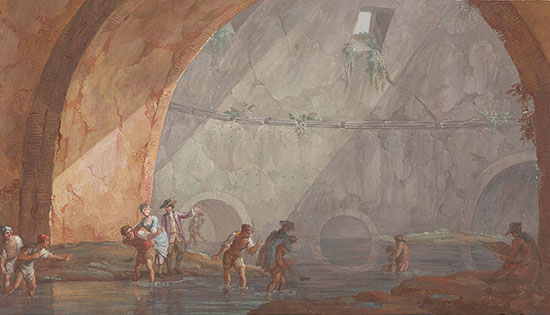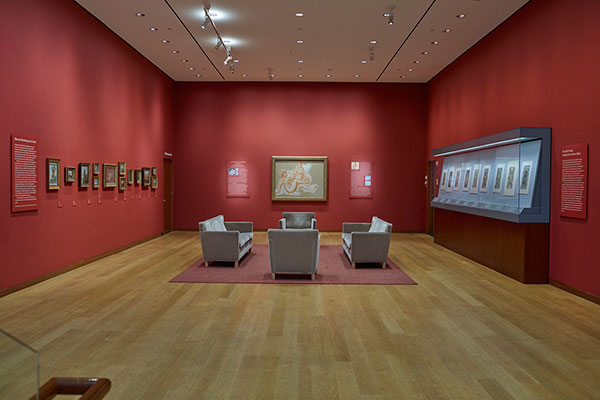
By the mid-eighteenth century, the Grand Tour, a study trip through Europe with a period of residence in Italy, had become a fixture in the education of European aristocrats and the training of artists. These young travelers were eager to return home with reminders of their experience, which contributed to a demand for paintings, prints, and drawings of Italian views, or vedute. Rome and the vestiges of its ancient past were especially popular subjects, as is also reflected in the nearby display of oil sketches. The burgeoning genre spawned specialized artists (vedusti), particularly at the French Academy in Rome, a center of creative exchange for not only academy members but also other artists active across the city.
Artists took various approaches to vedute. Some adopted a documentary route, recording archeological and architectural sites, occasionally enlivened with figures. Others altered elements of an existing view or invented an entirely fictive scene, known as a capriccio. In both real and imagined modes, a powerful influence and creative force was the Italian Giovanni Battista Piranesi (1720–1778), who for some time maintained a workshop across the street from the French Academy and interacted with many of its artists.
Charles-Louis Clérisseau
French, 1721–1820
Travelers in the Interior of the “Temple of Mercury” at Baiae, ca. 1761
Opaque watercolor
Purchased as the gift of Mrs. Fleischmann, Mr. and Mrs. Walter Klein, and Mrs. Richard Rogers; 1985.62

Lower Level Gallery
